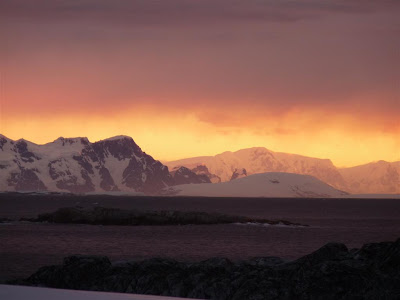 The change has been surprising fast. In January we were enjoying 22 hours of daylight and warm temperatures above freezing.
The change has been surprising fast. In January we were enjoying 22 hours of daylight and warm temperatures above freezing.Then, in February we started getting sunset before bedtime. Growing earlier by 6 minutes every day, the sunset was soon happening at dinnertime.
Now, the seasons seem to be moving quickly. Snow we had a week ago is still on the ground and wind whips the harbor into small whitecaps. 1000 miles away at the tip of South America, our ship the LM Gould is waiting to cross the Drake Passage and bring the winter crew in. Days of a strong low pressure system have driven waves to 14 meters. This is extreme weather, even for the southern ocean. The ship is waiting and will cross when weather calms down in a few days.




Its a pleasure for me to feel the change of seasons. But it also marks my departure. When the Gould arrives, I will train my replacement and then leave, departing by April 6th. I arrived to station in early spring and I'm leaving, nearly 7 months later, in late Fall. Its been an extreme privilege to be immersed in the environment during this time. It will also be a pleasure to return home and tell more people about what I saw down here.















































